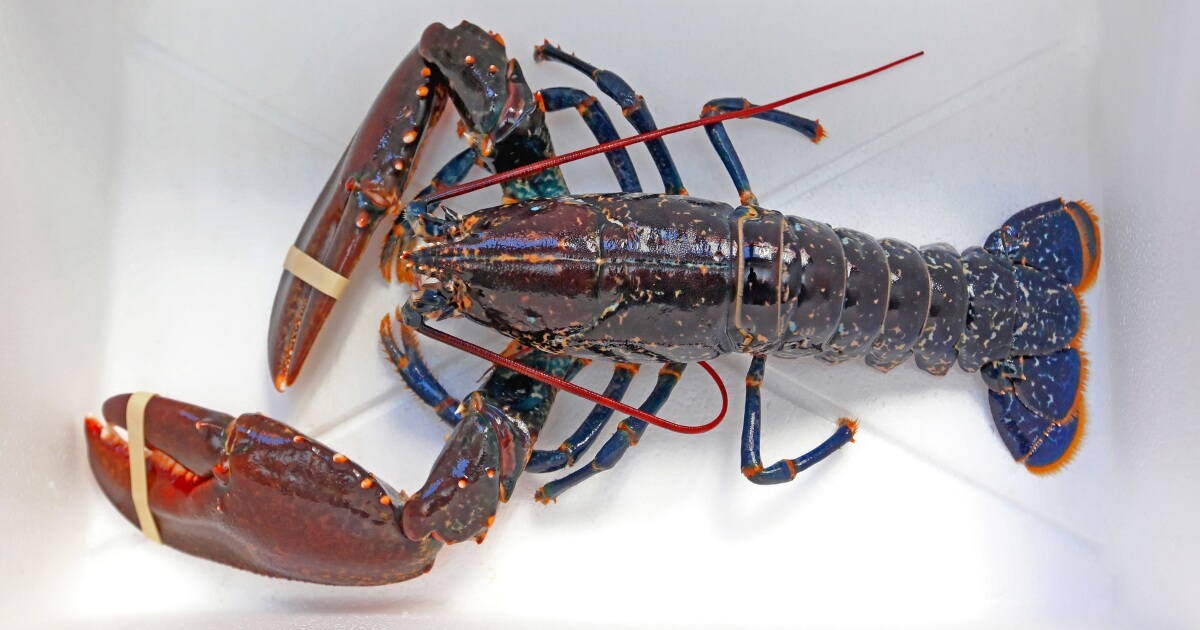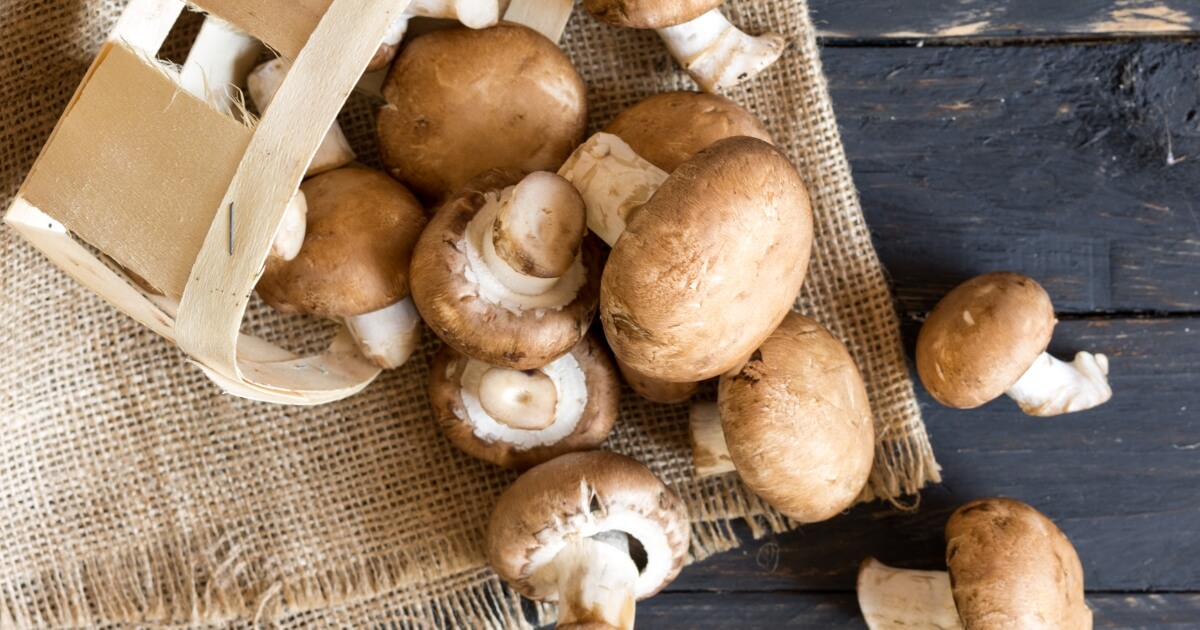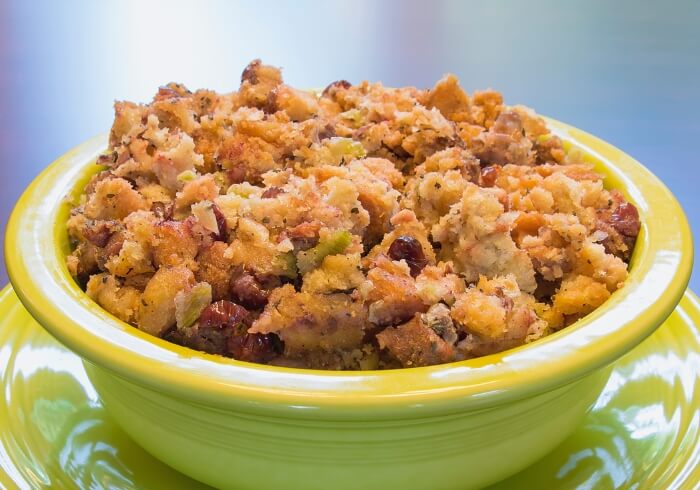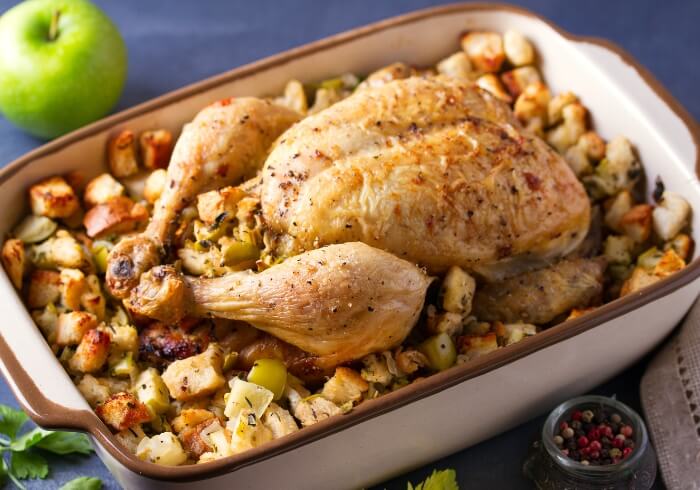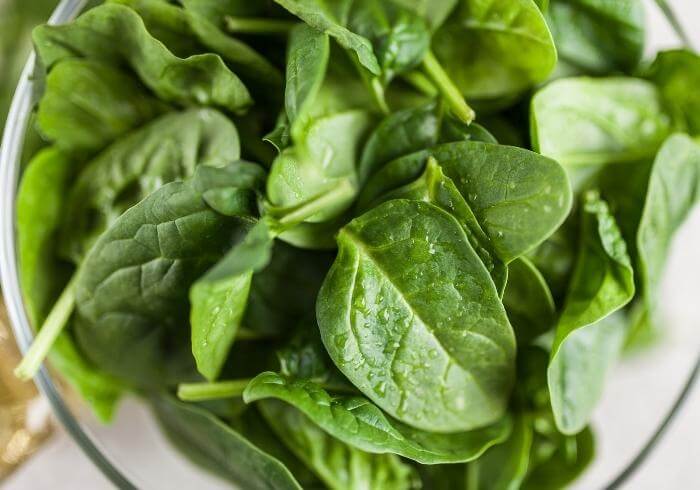Wondering how to eat lobster without making a mess or missing out on succulent lobster meat that’s locked away in its shell? You’ve come to the right place!
This guide is your ultimate resource for mastering the art of eating lobster. From the claws to the tail, I’ve got you covered. You’ll savor every piece of meat and impress those around you with your seafood expertise.

So, why should you learn how to eat lobster? Well, lobster is a treat you don’t want to waste. Plus, let’s face it, lobster isn’t cheap. You want to get every bit of value from that delicious crustacean.
This guide will walk you through each step, from the tools you’ll need to the techniques for extracting every last bit of meat.
What Part Of Lobster Can You Eat?
What parts of a lobster are actually edible? Great question! The answer is that most of the lobster can be eaten, from the claw meat to the tail meat. Even some hidden pockets of meat in the body are up for grabs.
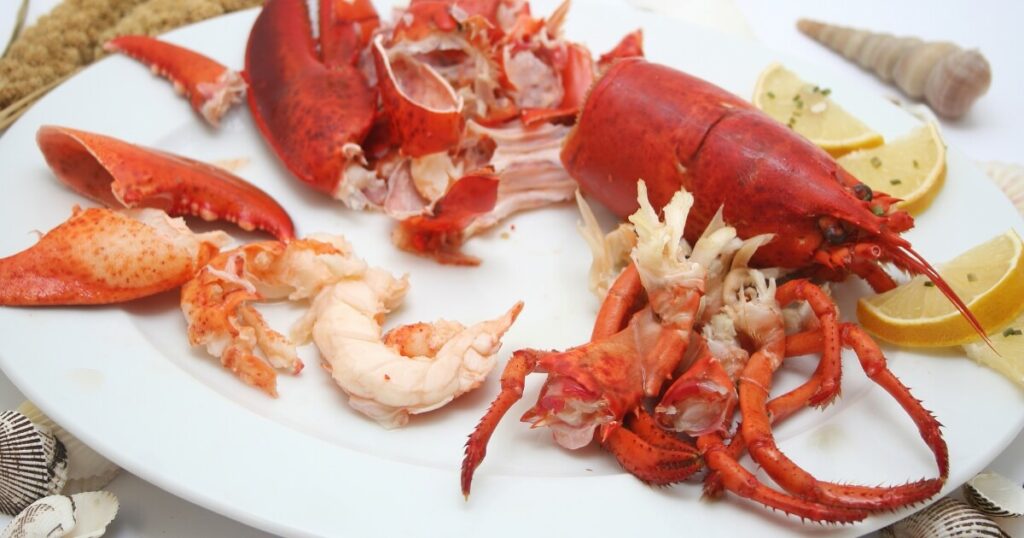
- Claw Meat: Rich and tender, often considered the best part.
- Tail Meat: Dense and flavorful, great for lobster rolls.
- Knuckle Meat: Found in the jointed sections, a hidden gem.
- Leg Meat: Requires a bit of work but worth the effort.
- Body Cavity: Contains small bits of meat and a green substance known as tomalley.
Now, not all lobsters are created equal. For instance, female lobsters offer the added bonus of lobster eggs, also known as coral, which are a delicacy for some. Male lobsters, on the other hand, have larger claws, which means more claw meat to enjoy.
You might wonder about the green substance in the lobster’s body cavity. That’s the tomalley, which is the liver and pancreas. While some consider it a delicacy, others prefer to avoid it due to potential contaminants. It’s a personal choice, but now you know it’s there.
So, whether you’re a fan of claw meat or you’re all about that tail, there’s something for everyone when it comes to eating lobster.
What You’ll Need
Before you dive into that delicious lobster that you bought, let’s make sure you’re armed with the right tools.
Trust me, a seafood fork and lobster crackers are not optional. And you’ll also need napkins, lots of them, and a bowl for the shells.
- Lobster Crackers: Essential for breaking open those tough shells.
- Seafood Fork: Also known as a lobster fork, it is perfect for digging out bits of meat.
- Napkins: Lobster eating can get messy, so be prepared.
- Bowl for Shells: Keep your dining area clean by discarding shells here.
Now, consider a bib and lemon wedges for those who want to go the extra mile. A bib might seem over the top, but things can get splashy when you’re cracking open lobster. It’s better to be safe than sorry, especially if you’re wearing something nice.
Lemon wedges are another optional but highly recommended addition. A squeeze of lemon juice can elevate the flavor of the lobster meat, making your meal even more memorable.
Step 1: Separate The Tail And Body
You’ve got this beautifully cooked lobster in front of you, it’s cooled off, and you’re ready to dig in. The first move? Separate the tail from the body.
Place your lobster belly up on a flat surface. Grab the body with one hand and the tail with the other. Now, give it a good twist. Yep, just like you’re wringing out a wet towel.
- Safety First: Make sure your hands are dry, or use two small dry cloths for a good grip. You don’t want that lobster slipping away from you.
- Twist Technique: Hold the lobster’s body in one hand and the tail in the other. Twist in opposite directions. You’ll feel the tail give way.
If you’ve done it right, the tail should come off cleanly, leaving you with two main parts: the body and the tail.
Step 2: The Claws
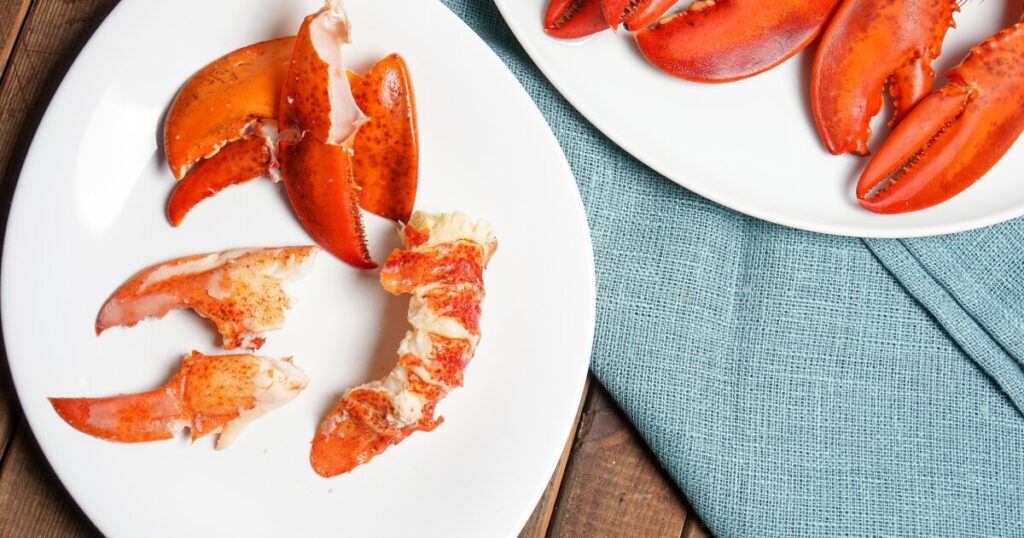
Hold the lobster by the body to remove the claws and twist each claw off at the joint. A slight twist should do the trick, easily separating the claw from the body.
- Removing the Claws: Hold the lobster’s body in one hand and the claw in the other. Twist and pull gently until the claw detaches.
- Tools for the Job: Lobster crackers or a nutcracker will be your go-to tools for breaking into the claw shell.
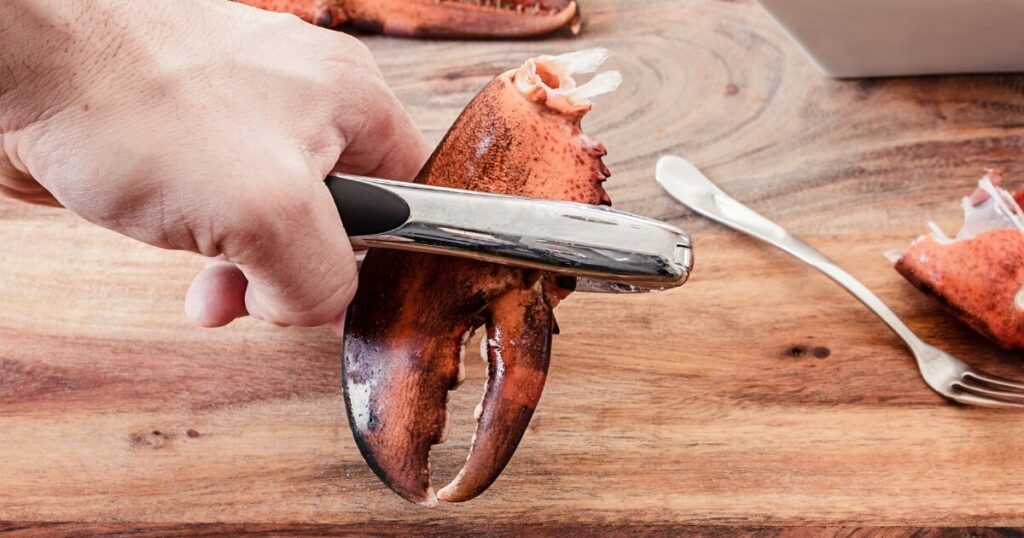
Once the claws are off, it’s time to get to that delicious meat. Use your lobster crackers to crack the shell at its widest point. If you don’t have lobster crackers, the back of a heavy knife can also work. Just give it a good whack, but be careful not to smash the meat inside.
After cracking the shell, use your seafood fork or lobster pick to extract the meat. Slide the fork into the larger end of the claw and gently push the meat out from the other end.
You’ve successfully harvested the claw meat, and it’s worth every bit of effort!
Step 3: The Tail
Lobster tail is where you’ll find a bounty of dense, flavorful lobster meat.
You should have already separated it from the body, but in case you jumped straight to this step:
Hold the lobster’s body in one hand and the tail in the other. Give the tail a firm twist, and it should come right off. You’ll want to do this over a plate to catch any lobster juices that may escape.
- Separating the Tail: Hold the body firmly and twist the tail with a slight pull. It should detach easily, revealing the tail meat.
- Tools for the Job: A pair of kitchen shears or a sharp knife will be your best friend for this step.
Once the tail is separated, it’s time to get to that delicious tail meat. Place the tail flat on your surface and use kitchen shears to cut through the softer membrane on the underside. This will expose the meat, making it easier to remove.
If you don’t have kitchen shears, a sharp knife will also do the job, but you’ll need to be extremely careful not to cut yourself.
To extract the tail meat in one beautiful piece, use your hands to pry open the tail further. You may need to make additional cuts to help make this easier.
There you have it, a perfect piece of tail meat ready for some melted butter and maybe a squeeze of lemon.
Step 4: The Knuckles And Legs
Don’t overlook the knuckles and legs. They have sweet, delicious meat as well.
To crack the knuckles, you’ll want to use your lobster crackers. Position the cracker at the widest part of the knuckle and apply pressure until it cracks open. Because they are a bit complicated, you’ll need a seafood fork to pick out the flesh, carefully removing any bits of shell.
- Cracking the Knuckles: Use your lobster crackers to apply pressure at the thickest part of the knuckle. A clean crack will make it easier to extract the meat.
- Tools for the Job: Lobster crackers are essential here. A regular fork just won’t cut it for this intricate work.
Snap off those legs! Hold the body in one hand and a leg in the other. Give it a good twist and pull. You’ll need to work them back and forth a little and hear a little snap before you can remove them, and that’s your cue to move on to the next one.
- Twist and Pull: Grab a leg and twist it away from the body. It should come off easily, leaving you with a leg ready for extraction.
- Suck and Savor: For the smaller legs, snap the joints and work them back and forth. The goal here is to suck the meat out. It’s a bit of a technique.
- Crack and Retrieve: For the larger legs, use lobster crackers to gently crack the shell. Once you’ve got that crack, use your seafood fork to work the meat out.
- Seafood Fork to the Rescue: This little tool is your best friend for those hard-to-reach morsels. A seafood fork makes it easy to get every last bit of meat.
You’ve cracked the knuckles and mastered the art of leg meat extraction. These might seem like small victories, but every bit of lobster meat is a win.
Step 5: The Body And Head Section
Believe it or not, the lobster body and head section also have some hidden gems.
- Finding Hidden Meat: Look for small pockets of meat in the body cavity near the joints that connect the claws and legs.
- Tools for the Job: A lobster pick or seafood fork will be your go-to.
Now, let’s talk tomalley. This green substance is the lobster’s liver and pancreas. If you’re in the “yes, please” camp, you can spread it on bread or add it to sauces for extra flavor.
- Handling Tomalley: If you choose to eat it, use a spoon to carefully scoop it out from the body cavity.
- To Eat or Not to Eat: The choice is yours, but if you decide to indulge, know that it adds a rich, complex flavor to sauces and spreads.
- What to Avoid: While exploring the body and head section, you may come across a dark vein or sac. This is the lobster’s digestive tract and should be removed and discarded. It may not be harmful, but it’s definitely not tasty.
Step 6: The Finishing Touches
You’ve cracked, twisted, and picked your way to a heap of glorious lobster meat. Now, let’s talk finishing touches. A drizzle of melted butter and a squeeze of lemon juice can elevate your lobster to heavenly heights.
- Lemon and Butter: Melted garlic butter is a classic accompaniment for dipping. Lemon juice adds a zesty kick that brightens the flavor.
- Tools for the Job: A small bowl for the butter and a lemon wedge on the side should do the trick.
- Presentation Tips: Use a white or light-colored plate to make the lobster the star of the show.
- Restaurant-Quality: For that extra touch, consider small ramekins for melted butter and lemon wedges, making it easy for everyone to customize their lobster experience.
Eating Lobster FAQs
Is it safe to eat the green stuff in lobster (tomalley)?
The green substance, known as tomalley, is the lobster’s liver and pancreas. While some consider it a delicacy, others avoid it due to potential contaminants. The choice is yours, but always exercise caution.
Can you eat lobster shells?
No, lobster shells are not edible and should be discarded. However, they can be used to make a flavorful seafood stock. Just boil the shells with some veggies and herbs.
How do you know when the lobster is fully cooked?
A fully cooked lobster will have a bright red shell and white, opaque meat. It needs more time if the meat is translucent or the shell is not red. Always ensure the internal temperature reaches 145°F for safety.
Do people eat lobster eggs?
Yes, lobster eggs, also known as roe or coral, are edible and considered a delicacy by some. They turn red when cooked and have a rich, briny flavor. However, female lobsters are less commonly harvested due to sustainability practices.
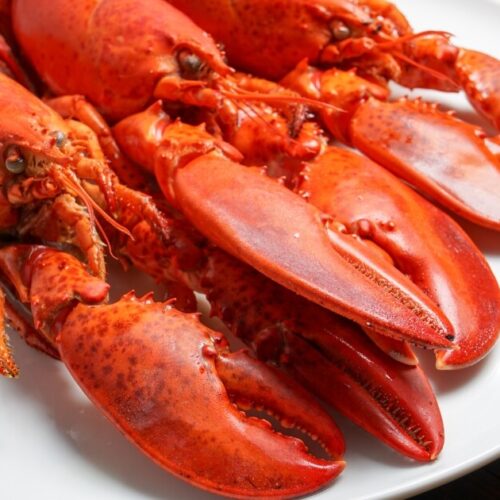
How To Eat Lobster
Equipment
- 1 Lobster Crackers
- 1 Seafood Fork
- 1 Napkins Bib
Ingredients
- 1 whole lobster
- 1 whole lemon
- 1 tbsp garlic butter
Instructions
- Twist the tail and head in opposite directions to separate them.
- Twist and pull the claws to detach them from the body. Use your lobster crackers to crack the claws and a seafood fork to extract the meat.
- Use kitchen shears to cut the softer membrane on the underside, then use a seafood fork to extract the meat.
- Use lobster crackers to crack the legs.
- Use a lobster pick to find pockets of meat. Avoid the dark vein or sac in the body.
- Serve with a bowl of melted garlic butter and lemon wedges.
Quick Tips
- Always choose a fresh, lively lobster for the best flavor.
- Hard-shell lobsters have more meat but require more effort to crack.
- Soft-shell lobsters are easier to crack but have less meat.
- Use a bib to protect your clothing from splashes.
- Lemon juice enhances the flavor of the lobster meat.
Expert Tips
- Insider Secrets: An oyster fork or a specialized lobster pick can help you get to those elusive bits of meat in the body and knuckles.
- Tools for the Job: Keep a variety of picks and forks on hand to ensure you get every piece of meat.
- Eating lobster can be messy, but it doesn’t have to be. Using a lobster bib is a game-changer, especially if you’re wearing something you’d rather not stain. Also, keep a bowl of cold water and lemon slices nearby for quick hand-cleaning.
- Mess-Free Eating: A lobster bib is your best friend for keeping your clothes clean. It’s not just for kids!
- Clean-Up Station: A bowl of lemon water on the table makes for easy hand-cleaning between courses.

